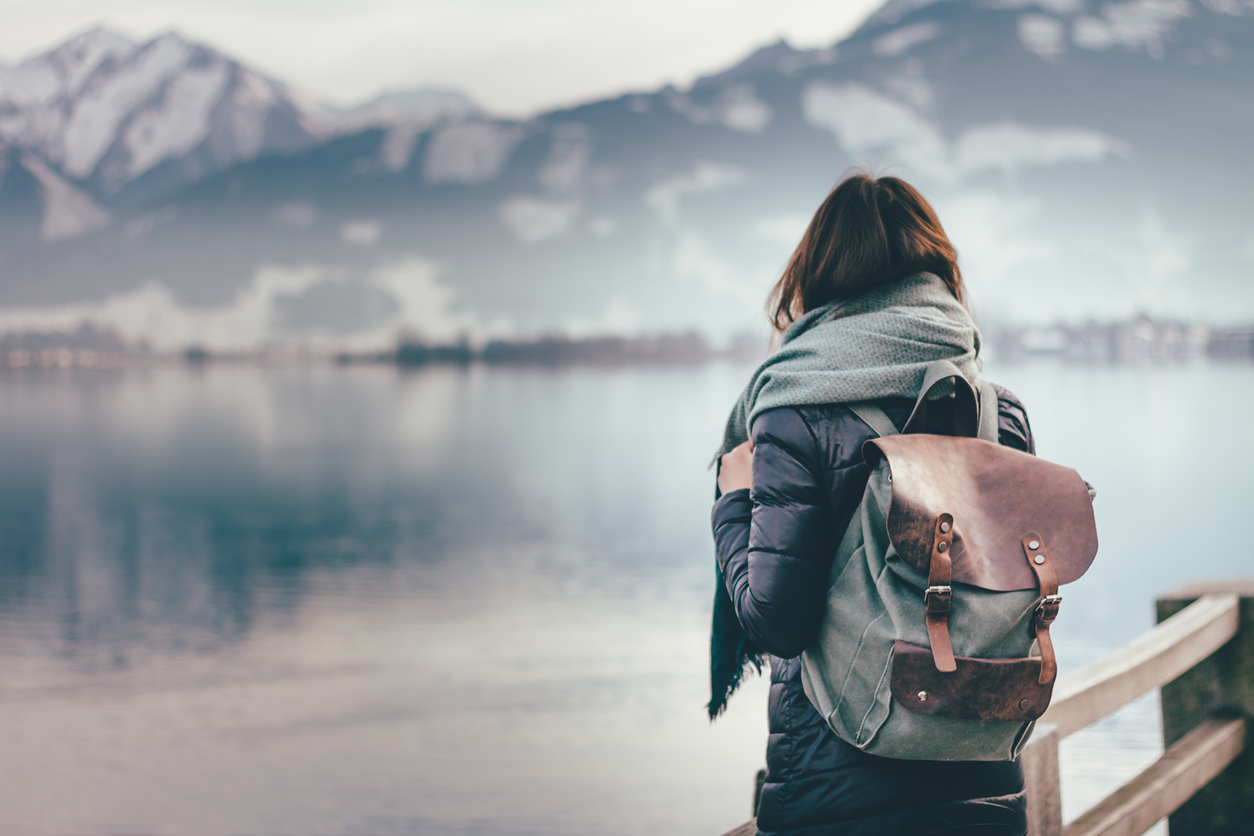Senior woman traveling alone: Embarking on a solo adventure later in life offers unparalleled freedom and self-discovery. This guide addresses the unique considerations and challenges faced by senior women venturing out independently, providing practical advice and empowering strategies for a safe, enriching, and memorable experience. From meticulous planning to navigating unforeseen circumstances, we’ll equip you with the knowledge and confidence to make your solo journey a truly fulfilling one.
This comprehensive resource covers crucial aspects of solo travel for senior women, including safety precautions, logistical planning, health and wellness strategies, cultural sensitivity, and financial management. We aim to demystify the process, transforming potential anxieties into exciting possibilities. We’ll explore various destinations, offering sample itineraries and highlighting the rewards of independent exploration at any age.
Safety and Security Concerns
Traveling solo as a senior woman requires careful consideration of safety and security. While independent travel offers immense rewards, proactive planning and awareness are crucial for a worry-free experience. This section outlines common concerns and practical strategies to mitigate risks.
Common Safety Concerns for Senior Women Traveling Alone
Senior women traveling alone may face unique safety challenges, including vulnerability to scams, theft, and physical harm. The increased likelihood of health issues during travel further compounds these risks. Furthermore, unfamiliar environments and language barriers can heighten feelings of isolation and insecurity. Specific concerns might include navigating public transport alone at night, managing luggage in crowded areas, and dealing with unexpected medical emergencies.
Preventative Measures to Ensure Safety While Traveling Alone
Prioritizing safety begins with thorough pre-trip planning. This includes researching destinations for safety ratings and potential risks, informing family and friends of itinerary details, and making copies of important documents like passports and travel insurance information. Consider registering with your embassy or consulate for added security. Staying in well-lit and reputable accommodations, avoiding walking alone at night, and being mindful of surroundings are crucial. Utilizing ride-sharing services or reputable taxi companies instead of relying on less regulated transport is also recommended. Learning basic phrases in the local language can help in emergency situations. Finally, keeping valuables secure and avoiding displaying expensive jewelry or electronics will minimize the risk of theft.
Staying Connected with Family and Friends While Traveling Independently
Maintaining regular communication with loved ones is paramount for peace of mind. This can be achieved through daily check-in calls or text messages, sharing location updates via apps, and scheduling regular video calls. Consider investing in a local SIM card or a portable Wi-Fi device for reliable connectivity. Pre-arranging emergency contact numbers and sharing them with family and friends is also crucial. Providing detailed itinerary information can help loved ones track your whereabouts and ensure your safety.
Importance of Travel Insurance for Senior Women Traveling Alone
Travel insurance is essential for senior women traveling alone, providing a safety net against unforeseen circumstances. It covers a range of potential issues, including medical emergencies, trip cancellations, lost luggage, and personal liability. Different types of coverage exist, such as comprehensive travel insurance, which offers extensive protection, and basic travel insurance, which provides more limited coverage. Medical evacuation insurance is particularly crucial for senior travelers, covering the costs of transporting a traveler to a medical facility equipped to handle their specific needs. It’s vital to choose a policy that aligns with individual needs and budget, carefully reviewing the terms and conditions before purchasing.
Transportation Method Safety Comparison
The choice of transportation significantly impacts safety. Below is a comparison of different methods:
| Transportation Method | Safety Rating (1-5, 5 being highest) | Cost | Convenience |
|---|---|---|---|
| Taxi/Ride-sharing services (Uber/Lyft) | 4 | Moderate to High | High |
| Public Transportation (Bus/Train) | 3 | Low | Moderate |
| Rental Car | 3 | Moderate to High | High |
| Walking | 2 | Low | Low |
Health and Wellness
Traveling solo as a senior woman requires careful consideration of health and wellness. Maintaining good health while exploring new environments is crucial for a safe and enjoyable trip. This section outlines strategies for proactively addressing potential health concerns and ensuring a healthy journey.
Potential Health Concerns and Mitigation Strategies
Several health issues can pose unique challenges for senior women traveling alone. These include dehydration, exacerbated chronic conditions, injuries from falls, and difficulties accessing appropriate medical care in unfamiliar locations. Effective mitigation involves thorough planning and preparation. For example, carrying a readily accessible water bottle and utilizing hydration reminders on a smartphone can prevent dehydration. Similarly, pre-trip consultations with physicians to manage chronic conditions, such as obtaining necessary prescriptions and understanding potential impacts of travel on medication efficacy, are crucial. Packing appropriate footwear and utilizing walking aids, where needed, can reduce the risk of falls. Finally, researching accessible healthcare options at the destination, including the location of hospitals and clinics, as well as emergency contact information, ensures preparedness for unexpected health issues.
Managing Chronic Health Conditions While Traveling
Managing chronic conditions during travel requires meticulous planning. This includes obtaining sufficient medication supplies, considering potential climate impacts on health, and carrying a detailed medical history document. For instance, individuals with diabetes need to ensure they have enough insulin and supplies to account for potential delays. Those with heart conditions should be aware of altitude changes and take necessary precautions. A comprehensive medical history, including medication lists, allergies, and contact information for physicians, is vital for any unforeseen medical situations. It’s advisable to carry this information both physically and electronically, stored securely and readily accessible.
Maintaining a Healthy Lifestyle While on the Road
Maintaining a healthy lifestyle while traveling is achievable with some effort. This includes prioritizing regular physical activity, maintaining a balanced diet, and ensuring adequate sleep. For instance, incorporating daily walks to explore the destination offers exercise and sightseeing. Choosing accommodations with kitchen facilities allows for healthier meal preparation, minimizing reliance on potentially less nutritious restaurant options. Furthermore, maintaining a regular sleep schedule, even when adjusting to different time zones, is essential for well-being. Packing comfortable sleepwear and using earplugs or eye masks can aid in achieving quality sleep.
Accessible Healthcare Resources for Travelers
Accessing healthcare resources varies across countries. Before traveling, research local healthcare systems, emergency services, and the availability of English-speaking medical professionals. Consider purchasing international travel insurance that covers medical emergencies and evacuations. Many countries have excellent healthcare systems, but understanding the process for accessing care is crucial. For example, some countries utilize a national health service, while others rely on private healthcare providers. Familiarizing yourself with these differences is important for prompt and effective healthcare access.
Packing a Comprehensive First-Aid Kit
A well-stocked first-aid kit is essential for any solo traveler, especially seniors. This should include common medications like pain relievers, anti-diarrheal medication, antihistamines, antiseptic wipes, bandages of various sizes, gauze, adhesive tape, and scissors. Senior travelers should also consider including items specifically relevant to their health conditions, such as any necessary prescription medications, a blood pressure monitor (if applicable), and any other assistive devices. Remember to check the regulations on carrying medications across international borders and ensure you have appropriate documentation for any prescription drugs.
Budget and Financial Planning
Planning your finances is crucial for a successful and stress-free solo trip. Understanding the various costs involved and developing effective budgeting strategies will ensure you can enjoy your adventure without exceeding your financial limits. This section will outline the typical expenses, provide practical budgeting tips, and explain different methods for managing your money while traveling.
Costs Associated with Solo Travel for Senior Women
The cost of solo travel for senior women varies significantly depending on destination, travel style, and duration. Flights often represent a substantial portion of the budget, with prices fluctuating based on the time of year and booking in advance. Accommodation costs range from budget-friendly hostels and guesthouses to mid-range hotels and luxury resorts. Activities can include sightseeing tours, museum visits, and participation in local events, each with varying price points. Finally, food expenses depend on dining choices, ranging from affordable street food to fine dining experiences. For example, a two-week trip to Southeast Asia might cost significantly less than a similar trip to Europe or North America. A detailed breakdown of potential costs for a hypothetical trip to Italy for 10 days could include: Flights ($1000-$1500), Accommodation ($70-$150/night), Activities ($50-$100/day), and Food ($50-$100/day). These figures are estimates and can vary widely.
Effective Budgeting Tips for Solo Trips
Creating a realistic budget involves careful planning and tracking of expenses. Begin by determining your total budget and allocating funds to different categories like flights, accommodation, activities, and food. Consider using a spreadsheet or budgeting app to track your spending and ensure you stay within your limits. Prioritize essential expenses and be mindful of unexpected costs, such as travel insurance or unforeseen medical expenses. Tracking spending diligently throughout your trip allows for necessary adjustments and prevents overspending. For instance, setting daily spending limits for food and activities helps manage impulsive purchases.
Managing Finances While Traveling
Safe and efficient financial management is essential during solo travel. Using credit cards offers convenience and fraud protection, but it’s crucial to monitor transactions regularly and pay off balances promptly to avoid high interest charges. Notify your bank of your travel dates to prevent card blocks. Foreign currency exchange should be done strategically, comparing exchange rates from banks, currency exchange bureaus, and ATMs to find the most favorable options. Carrying a mix of cash and cards provides flexibility and reduces reliance on a single method. Consider utilizing travel money cards that offer competitive exchange rates and security features.
Finding Affordable Travel Deals and Discounts
Numerous opportunities exist to find affordable travel deals. Booking flights and accommodation well in advance often secures lower prices. Consider traveling during the shoulder seasons (periods between peak and off-peak seasons) for better deals on flights and accommodation. Look for discounts and promotions offered by airlines, hotels, and travel agencies. Utilize travel websites and comparison tools to find the best prices. Senior discounts are often available for flights, accommodation, and attractions, so remember to inquire about these options. For example, many airlines offer senior citizen discounts on flights, and many museums and attractions provide reduced admission fees for senior travelers.
Creating a Realistic Travel Budget
A simple spreadsheet or budgeting app can effectively manage your travel budget. Create separate columns for different expense categories (flights, accommodation, activities, food, transportation, etc.). Input estimated costs for each category based on research and your travel plans. Regularly update the spreadsheet with actual expenses to monitor your spending and identify areas where you might need to adjust. This allows for proactive management of your finances, preventing unexpected financial strains during your trip. For example, a spreadsheet might include columns for date, category of expense, description, amount spent, and remaining budget. Regularly reviewing this will allow for better control and help in identifying areas where money can be saved.
Ultimate Conclusion
Ultimately, the journey of a senior woman traveling alone is a testament to personal strength, resilience, and a thirst for adventure. By thoughtfully preparing and embracing the unexpected, senior women can unlock a world of enriching experiences, forging lasting memories and a deeper understanding of themselves and the world around them. This guide serves as a roadmap, empowering you to confidently embark on your solo adventure, knowing you’re well-equipped to navigate any challenge and savor every moment of this unique and rewarding experience.




